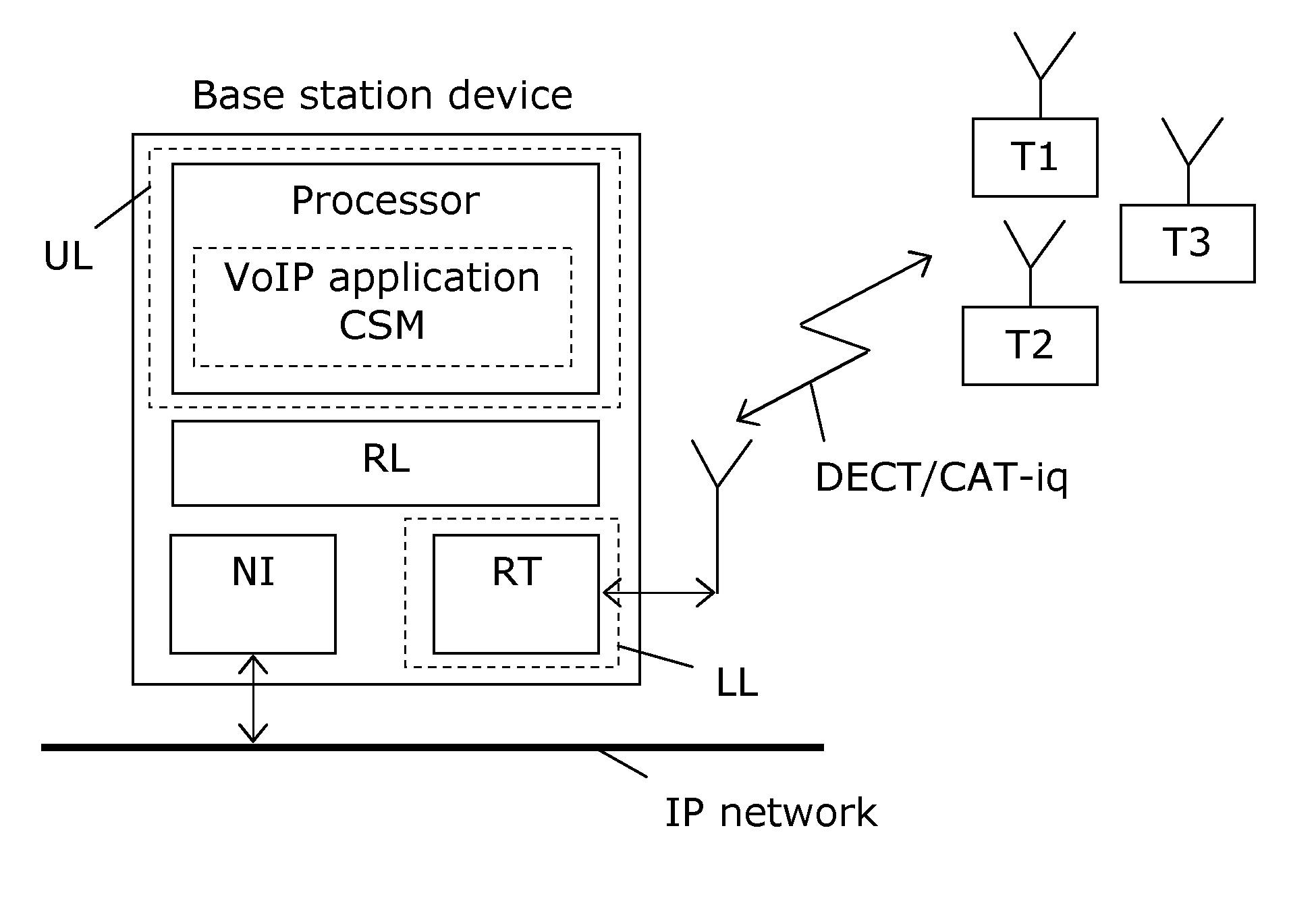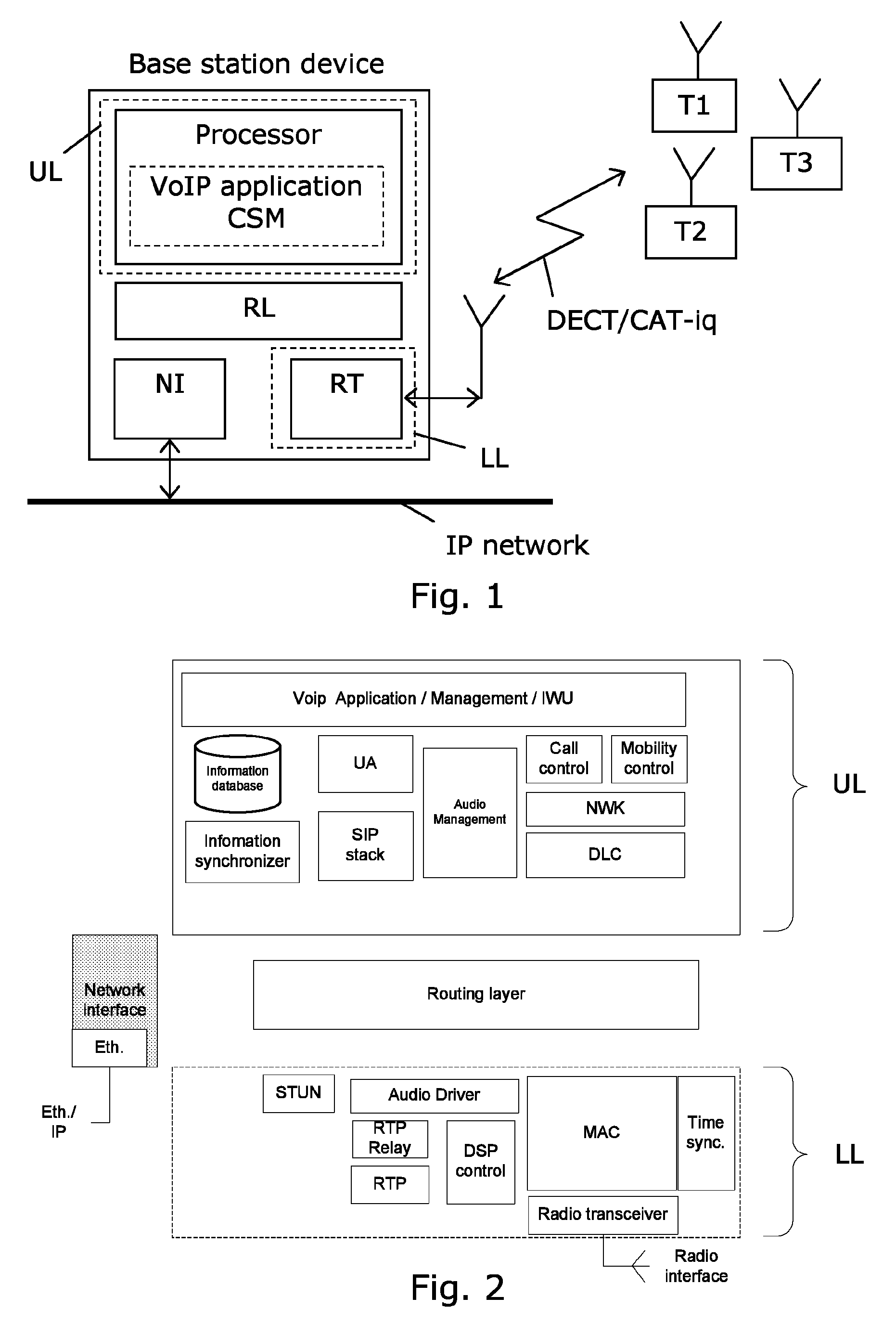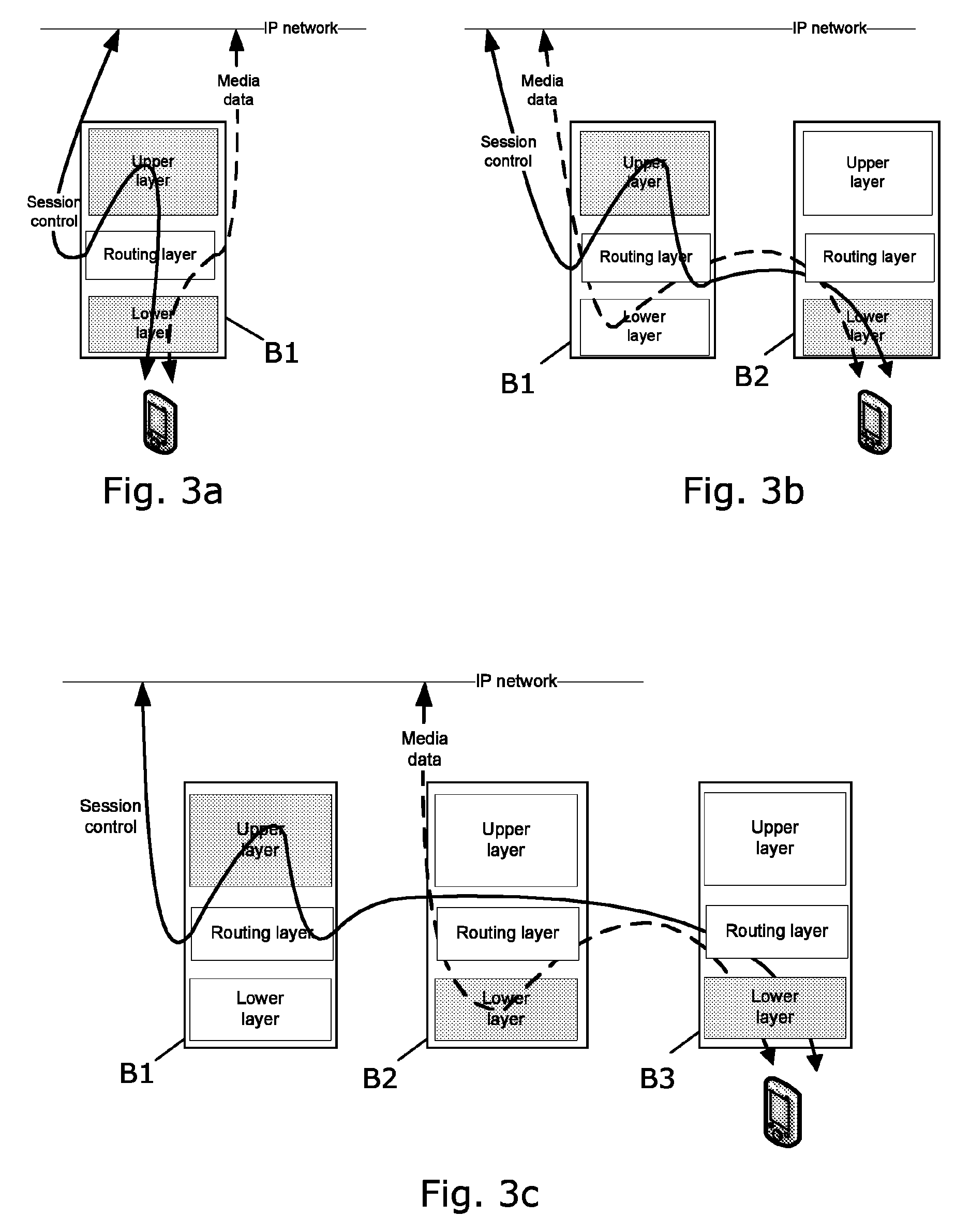Scalable wireless multicell VoIP architecture
a wireless multi-cell, wireless technology, applied in the direction of connection management, wireless commuication services, electrical equipment, etc., can solve the problems of not being able to enhance wireless coverage and increase the number of handsets outside the limit of the base station, central server setup suffers from several drawbacks, and maintenance requiring central server is still needed for such system to function, so as to increase system capacity and the ability to handle a larger number of wireless terminals, the effect of expanding the wireless coverag
- Summary
- Abstract
- Description
- Claims
- Application Information
AI Technical Summary
Benefits of technology
Problems solved by technology
Method used
Image
Examples
Embodiment Construction
[0043]FIG. 1 illustrates basic elements of a base station device embodiment connected via a network interface NI to an IP network, e.g. a wired Ethernet, and capable of wireless communication with three wireless terminals T1, T2, and T3, e.g. mobile handsets, according to a DECT / CAT-iq protocol.
[0044]A processor serves to run a communication application, here illustrated as a VoIP application, and software implementing communication session management functionalities CSM allowing the base station device to handle and control a communication session with one or more of the wireless terminals T1, T2, T3 by means of the wireless radio transceiver RT. These functions performed by the processor can be seen as basic parts of what can be denoted “upper layer” UL functionalities. The radio transceiver RT, here illustrated as a DECT / CAT-iq compatible radio transceiver RT, can be denoted “lower layer” LL since it serves to perform the physical wireless communication with the wireless terminal...
PUM
 Login to View More
Login to View More Abstract
Description
Claims
Application Information
 Login to View More
Login to View More - R&D
- Intellectual Property
- Life Sciences
- Materials
- Tech Scout
- Unparalleled Data Quality
- Higher Quality Content
- 60% Fewer Hallucinations
Browse by: Latest US Patents, China's latest patents, Technical Efficacy Thesaurus, Application Domain, Technology Topic, Popular Technical Reports.
© 2025 PatSnap. All rights reserved.Legal|Privacy policy|Modern Slavery Act Transparency Statement|Sitemap|About US| Contact US: help@patsnap.com



